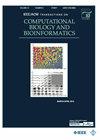MetalPrognosis:基于生物语言模型的金属结合部位疾病相关突变预测方法。
IF 3.4
3区 生物学
Q2 BIOCHEMICAL RESEARCH METHODS
IEEE/ACM Transactions on Computational Biology and Bioinformatics
Pub Date : 2024-09-25
DOI:10.1109/TCBB.2024.3467093
引用次数: 0
摘要
蛋白质与金属离子之间的相互作用在许多疾病的发病中起着核心作用。当氨基酸变化导致金属结合位点发生错义突变时,与金属离子的相互作用就会破坏蛋白质的功能,从而可能导致严重的人类疾病。识别金属结合区域内这些与疾病相关的突变位点,对于了解蛋白质功能和促进创新药物开发至关重要。虽然一些计算方法旨在应对这一挑战,但它们的准确性往往不高,这通常是由于人工特征提取和缺乏结构数据造成的。我们介绍的 MetalPrognosis 是一种创新的无配准解决方案,它能更精确地预测金属蛋白金属结合位点内与疾病相关的突变。MetalPrognosis 不依赖人工特征提取,而是采用滑动窗口序列作为输入,从预先训练好的蛋白质语言模型中提取深刻的语义见解。然后将这些见解纳入卷积神经网络,促进复杂特征的提取。比较评估显示,在各种金属蛋白测试集中,MetalPrognosis 的表现优于 MCCNN 和 M-Ionic 等领先方法。此外,一项消融研究重申了我们模型架构的有效性。为了方便公众使用,我们已将 MetalPrognosis 的数据集、源代码和训练好的模型放在 http://metalprognosis.unimelb-biotools.cloud.edu.au/ 网站上。本文章由计算机程序翻译,如有差异,请以英文原文为准。
MetalPrognosis: A Biological Language Model-Based Approach for Disease-Associated Mutations in Metal-Binding Site Prediction
Protein-metal ion interactions play a central role in the onset of numerous diseases. When amino acid changes lead to missense mutations in metal-binding sites, the disrupted interaction with metal ions can compromise protein function, potentially causing severe human ailments. Identifying these disease-associated mutation sites within metal-binding regions is paramount for understanding protein function and fostering innovative drug development. While some computational methods aim to tackle this challenge, they often fall short in accuracy, commonly due to manual feature extraction and the absence of structural data. We introduce MetalPrognosis, an innovative, alignment-free solution that predicts disease-associated mutations within metal-binding sites of metalloproteins with heightened precision. Rather than relying on manual feature extraction, MetalPrognosis employs sliding window sequences as input, extracting deep semantic insights from pre-trained protein language models. These insights are then incorporated into a convolutional neural network, facilitating the derivation of intricate features. Comparative evaluations show MetalPrognosis outperforms leading methodologies like MCCNN and M-Ionic across various metalloprotein test sets. Furthermore, an ablation study reiterates the effectiveness of our model architecture.
求助全文
通过发布文献求助,成功后即可免费获取论文全文。
去求助
来源期刊
CiteScore
7.50
自引率
6.70%
发文量
479
审稿时长
3 months
期刊介绍:
IEEE/ACM Transactions on Computational Biology and Bioinformatics emphasizes the algorithmic, mathematical, statistical and computational methods that are central in bioinformatics and computational biology; the development and testing of effective computer programs in bioinformatics; the development of biological databases; and important biological results that are obtained from the use of these methods, programs and databases; the emerging field of Systems Biology, where many forms of data are used to create a computer-based model of a complex biological system

 求助内容:
求助内容: 应助结果提醒方式:
应助结果提醒方式:


